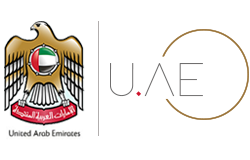2030-2117
The UAE is planning to establish the first inhabitable human settlement in Mars by 2117. The UAE Centennial Plan 2071 offers a clear map for the long-term government work to fortify the country's reputation and its soft power. The UAE will have achieved Dubai Clean Energy Strategy under which 75 per cent of Dubai's energy will be generated from clean sources. The UAE will also have achieved Fujairah 2040 Plan.
Mars 2117 project
The UAE aims to establish the first inhabitable human settlement in Mars by 2117. H. H. Sheikh Mohammed bin Rashid said that the project is a seed that the UAE plants today and expects future generations to reap the benefits, driven by its passion to learn to unveil a new knowledge.
He issued directives to Mohammad Bin Rashid Space Centre to lead the Mars 2117 project and prepare a 100-year plan for its implementation. As per his directives, the centre’s plan will focus on preparing specialised national cadres and developing their capabilities in the fields of space science, research, artificial intelligence, robotics and advanced space technologies. The UAE is among the top nine countries in the world that invest in the space sciences.
Mars Scientific City
In line with Mars 2117 Strategy, the UAE will build a complex of buildings called Mars Scientific City. It will comprise laboratories for food, energy and water, agricultural testing and studies about food security in the future. Mars Scientific City will include a laboratory that will stimulate the red planet’s terrain and harsh environment through advanced 3D printing technology and heat and radiation insulation. A team of scientists and astronauts will live in this simulated environment for one year.
Related links:
Centennial Plan 2071
UAE Centennial 2071 is a long-term, full-vision plan that extends for 5 decades after 2021. It forms a clear map for the long-term government work, to fortify the country's reputation and its soft power.
Read more on UAE Centennial 2071.
Dubai Clean Energy Strategy
In November 2015, Sheikh Mohammed launched Dubai Clean Energy Strategy. Under this strategy, Dubai aims to produce 75 per cent of its energy requirements from clean sources by 2050. The strategy also aims to make Dubai a global centre of clean energy and green economy. It consists of five main pillars: infrastructure, legislation, funding, building capacities and skills, and environment-friendly energy mix.
The infrastructure pillar includes initiatives such as Mohammed Bin Rashid Al Maktoum Solar Park, which is the largest generator of solar energy in the world from a single location with a capacity to produce 5,000 MW by 2030.
The legislation pillar focuses on the establishment of a legislative structure supporting clean energy policies in two phases.
The funding pillar includes the establishment of Dubai Green Fund worth of AED 100 billion which will contribute through its financial resources easy loans for investors in the clean energy sector in the emirate at reduced interest rates.
The fourth pillar aims to build human resources capabilities through global training programmes in the field of clean energy in cooperation with international organisations and institutes such as International Renewable Energy Agency (IRENA) as well as international companies and research and development centres.
The fifth pillar is focused on creating an environment friendly energy mix comprising solar energy (25 per cent), nuclear power (7 per cent), clean coal (7 per cent) and gas (61 per cent) by 2030. The mix will gradually increase the employment of clean energy sources to 75 per cent by 2050, making Dubai the city with the least carbon footprint city in the world.
Fujairah 2040 Plan
Fujairah 2040 Plan focuses on enhancing the housing and transportation infrastructure facilities. The municipality has begun work on road improvements, building water barriers, ports and residential complexes and expanding healthcare facilities at the cost of AED 1.5 billion.
The Fujairah seaport would have new terminals for oil, marine services, dry bulk and containers with an anchorage area. The Fujairah airport would undergo major expansion of the apron and runway and the cargo terminal and other buildings would be relocated. Meanwhile, streets and major roads are being re-laid and traffic signals are being added. 8,800 new homes and 1,500 hotel rooms would be built over the next five years.
One of the reasons for launching Fujairah 2040 Plan is to be able to cater to its population that is expected to exceed half million by 2040, up from 202,667 (according to the Statistical Yearbook of 2014).
Sources (The National):



